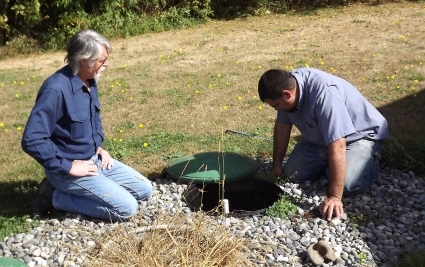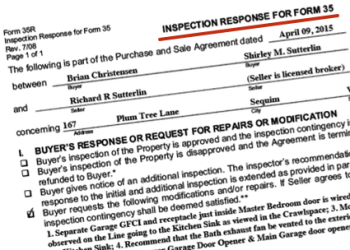How much due diligence should you do before you submit an offer to the seller? First, let’s make sure we’re on the same sheet of music by defining “due diligence.” Due diligence is the research you will want to do on a home and the property before you close on the transaction. The bottom line is you need to know if there are any serious issues that would cause you to walk away from the property, which is all part of doing your due diligence.
Due diligence usually includes a home inspection, a septic inspection (if outside a municipal system), a well inspection (if private), a review of the title by examining the preliminary title report, a possible neighborhood review, and perhaps a feasibility review. One of these inspections could trigger another sub-inspection of a specialist. The standard contingency addendums don’t include provisions for a survey or a boundary line review, but you may need to know more about the precise property boundaries.
Due Diligence Before Closing
All of these inspections or investigations are part of the due diligence process, and all of these must be done prior to closing the transaction. Some cannot be done before an offer is submitted and before the buyer and seller have reached a full agreement on the price and terms. For example, a full home inspection is not something a seller allows a buyer to do unless they already have an agreement signed. [I recommend reading some of my articles about due diligence at Due Diligence for Buyers.]
Also, a seller is not going to allow a buyer to dig holes on the property (perc tests) or to do other potentially destructive investigations unless the buyer has committed to buy the property subject to his contingencies. Sellers don’t really care about the buyer’s due diligence process. The seller is focused on selling and an acceptable selling price.
There clearly is some due diligence that a buyer can do on the Internet that will help answer some key questions, like what the plat looks like, the length and width of the property in feet, what an aerial view of the property looks like from a satellite, and a buyer can also look at all the property records from the country building department. But these are things that can be done by a buyer online and do not require an addendum with special language giving them permission to do that kind of research.
Due Diligence Before The Offer
I’ve learned something interesting about buyers over the decades. Buyers have different levels of comfort or discomfort. Most buyers have no issue with reaching mutual acceptance first with the seller, and then doing their inspections based on the terms of the addendums attached. But there are a few buyers who feel the need to know the outcome of these investigations before they draft and submit an offer to the seller.
First, if you do weeks of due diligence studies before even submitting an offer, the property could sell out from under you. End of story. If the property was an ideal property for you, you just lost it because you wanted to put the cart before the horse. We could have locked the property up by obtaining mutual acceptance and then doing the inspections under the contract terms. Don’t forget, if your inspections are not acceptable to you, you can simply terminate and get your earnest money back.
Second, contractually all your due diligence is already part of the inspection addendums with specific guidelines and timelines. In other words, you will get to do all the inspections and due diligence you want to, but the contracts in Washington have a process and timeline for inspections, and these come after you have mutual acceptance, not before.
Third, if you intend to use your investigation results to get the seller to come way down on their price, think again. It may sound like a reasonable strategy, but in this market it has never been an effective strategy. For example, you could prove there is not much merchantable timber on the property around the house, but I’ve never seen a seller agree to reduce the price based on your printed report that you paid a forester/timber cruiser to do.
Here are more examples. A written contractor report that you will have to paint the outside of the house in the next two years, or that the composition shingles may need replacing in the next 7 years never justify a huge reduction in price from a seller’s perspective.
The point is, if you are hoping to use your pre-offer investigations to submit a low ball offer, think again. I’m not saying it isn’t a legitimate way to think. I love negotiating, and I have 40 years of negotiating experience. I’m just saying in 23 years in this market in Sequim and Port Angeles and Port Townsend, that has never worked. Sellers have an idea of what their home is worth, and when they list it, they have no doubt done some extensive comparative market analyses, and perhaps they have reviewed their own hard costs in the land and construction of the house. Try as you might to justify a much lower offer, and the seller is going to hold out for a buyer who will come closer to their price, and eventually that does happen.
Which brings us back to the way offers are normally handled. The buyer makes their offer, and the seller can accept, reject, or counter. Then the buyer can respond, and you may have an offer go back and forth a few times. But if you try to persuade the seller that his price is way too high with your own inspectors and studies, the seller is just going to walk away and wait for the next buyer.
Of course, if you cannot see your way to justify a price the seller can accept, then you must walk away, too.
Last Updated on September 25, 2018 by Chuck Marunde


































